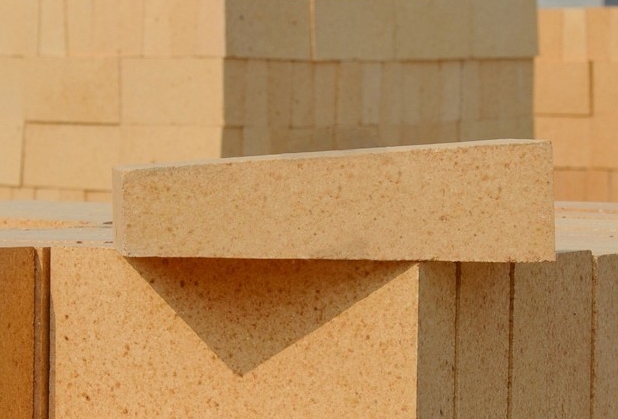- 16
- Sep
Кирпич высокоглиноземистый Т19 (топор)
Кирпич высокоглиноземистый Т19 (топор)

The high-aluminum axe brick is a vertical thick wedge-shaped brick. It is a brick type commonly used in high-aluminum products. It is named after its shape resembles an axe. Axe-shaped bricks are the T-19 type axe bricks we often say. The specific size standard of large axe refractory bricks is 230*114*65/55mm. There are many materials for axe-shaped bricks. This article will introduce you to clay-based large axe bricks. . Clay axe bricks are clay products with 30%-40% aluminum silicate with Al2O3 content.
Axe refractory brick T-19/T-20 is a kind of refractory brick widely used among thick wedge-shaped bricks. Axe bricks are vertical wedge-shaped (the long ends are one large and one small), and the dimensions of refractory bricks are T19: 230mm×114mm×65/55mm:; T-20: 230mm×114mm×65/45mm. T-19/T-20 refractory bricks are mainly used in furnace doors, arches, etc. in industrial kilns. When building arches and furnace doors, T-19 bricks are often used in cooperation with T-3 and corner bricks T-52 (T-51, T-53, etc.).
High-aluminum axe bricks T-19/T-20 are also divided into three grades. According to the Al2O3 content in high-alumina bricks, they are generally divided into four grades: special grade aluminum content: greater than or equal to 80%; first grade: Al2O3 content is 75% ; Second grade: Al2O3 content: 60~75%; Third grade: Al2O3 content is 48~60%. Кирпич высокоглиноземистый is also one of the refractory bricks commonly used in kilns.
The mineral composition of clay axe bricks is mainly kaolinite (Al2O3·2SiO2·2H2O) and 6% to 7% impurities (oxides of potassium, sodium, calcium, titanium, and iron). The firing process of clay bricks is mainly the process of continuous dehydration and decomposition of kaolin to form mullite (3Al2O3·2SiO2) crystals. The SiO2 and Al2O3 in the clay brick form eutectic low-melting silicate with impurities during the firing process, which surrounds the mullite crystals.
Clay bricks for hot blast stoves are clay bricks made from refractory clay and used to build blast furnaces for hot blast stoves. Clay bricks for hot blast stoves are used in hot blast stoves, regenerators and partition walls. Clay bricks for hot blast stoves require good thermal shock resistance, high load softening temperature and low creep
The refractoriness of axe bricks is comparable to that of silica bricks, as high as 1690~1730℃, but the softening temperature under load is more than 200℃ lower than that of silica bricks. Because the clay brick contains mullite crystals with high refractoriness, it also contains nearly half of the low melting point amorphous glass phase.
In the temperature range of 0~1000℃, the volume of clay bricks expands uniformly with the increase of temperature. The linear expansion curve is approximate to a straight line, and the linear expansion rate is 0.6%~0.7%, which is only about half of that of silica bricks. When the temperature reaches 1200°C and then continues to rise, its volume will start to shrink from the maximum expansion. The residual shrinkage of the clay bricks leads to the loosening of the mortar joints of the masonry, which is a major disadvantage of the clay bricks. When the temperature exceeds 1200°C, the low melting point substances in the clay bricks gradually melt, and the particles are tightly pressed against each other due to surface tension, resulting in volume shrinkage.
Физико-химические показатели:
| Рейтинг / Индекс | Кирпич высокоглиноземистый | Вторичный высокоглиноземистый кирпич | Кирпич высокоглиноземистый трехуровневый | Кирпич сверхвысокий глинозем |
| LZ-75 | LZ-65 | LZ-55 | LZ-80 | |
| AL203 ≧ | 75 | 65 | 55 | 80 |
| Fe203% | 2.5 | 2.5 | 2.6 | 2.0 |
| Насыпная плотность г / см2 | 2.5 | 2.4 | 2.2 | 2.7 |
| Прочность на сжатие при комнатной температуре МПа> | 70 | 60 | 50 | 80 |
| Температура размягчения нагрузки ° C | 1520 | 1480 | 1420 | 1530 |
| Огнеупорность ° C> | 1790 | 1770 | 1770 | 1790 |
| Видимая пористость% | 24 | 24 | 26 | 22 |
| Скорость изменения постоянной линии отопления% | -0.3 | -0.4 | -0.4 | -0.2 |
